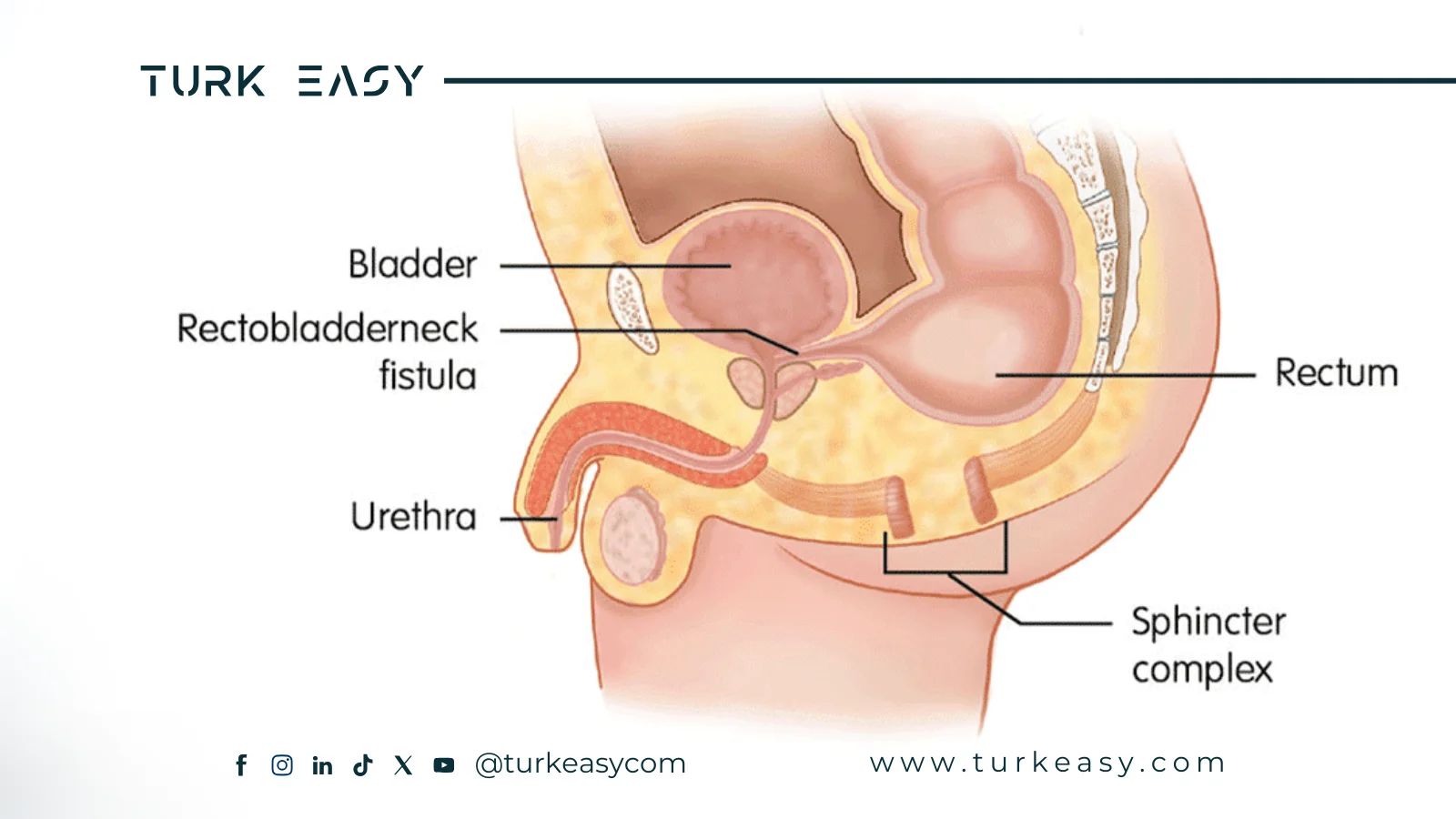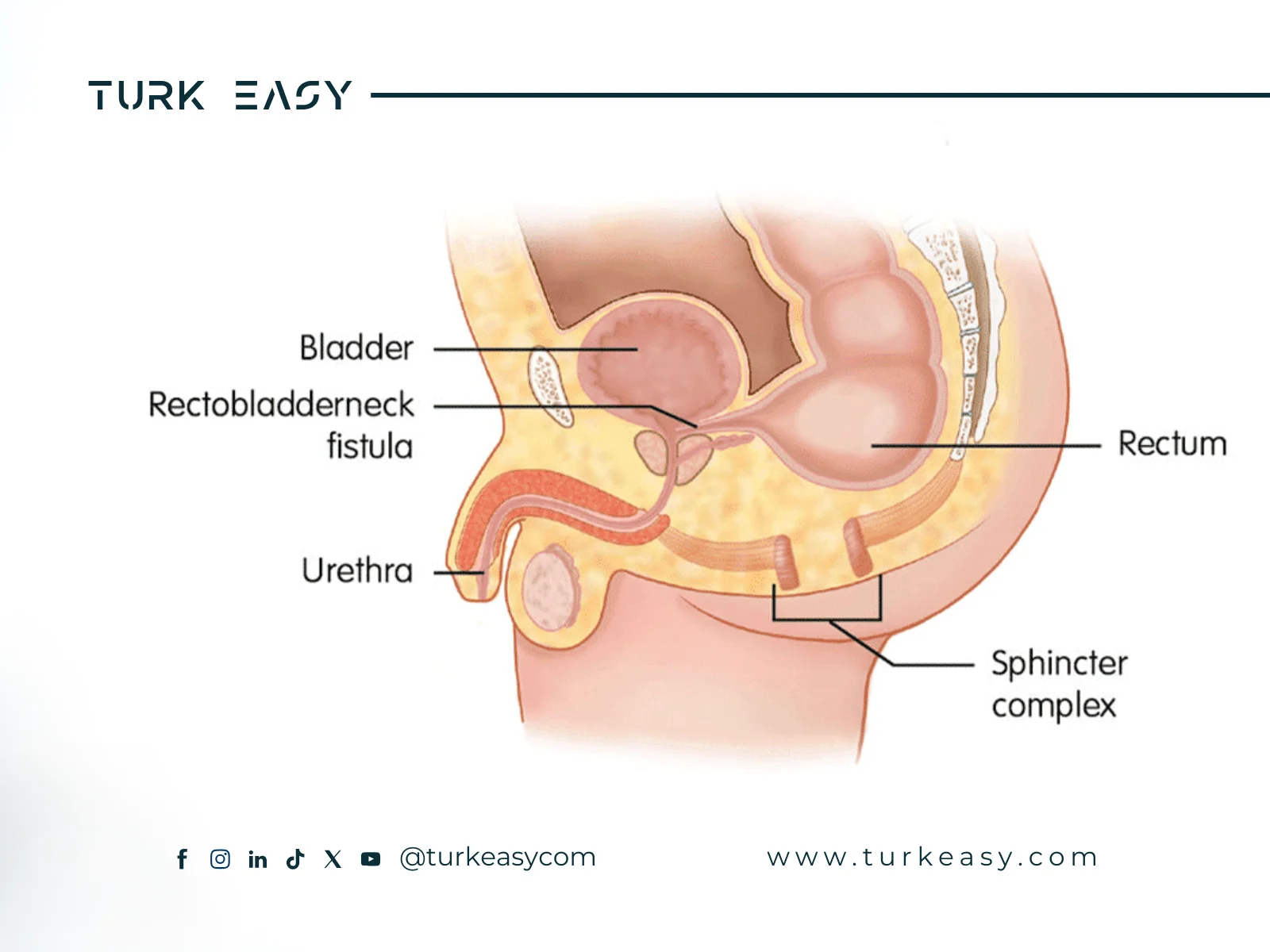Anal Atresia
Anal Atresia is one of the congenital defects that occur in newborns. It involves the absence of the anal opening, its presence in an abnormal location, or the covering of the opening by a thin layer of skin. Anal atresia may be accompanied by many other congenital defects, with a prevalence rate of one in every five thousand births. The condition affects males more than females, and in about 90% of male newborns, there is a connection between the urinary and digestive systems (fistula). For females, about 5% of cases have a single outlet in the perineum area, known as cloaca.
Symptoms of Anal Atresia
- Passage of feces from an opening other than the anus.
- Failure to pass feces completely within 48 hours after birth in newborns.
- Permanent abdominal swelling due to fecal accumulation in the large intestine.
- Absence of the anal opening or its presence in a location other than the normal position.
Classifications of Anal Atresia
- Presence of a fistula, meaning the rectum is connected to the abdominal wall from the front.
- Termination of the rectum at a point below the normal location of the anal opening.
- Presence of the anal opening in its normal location but extremely narrow, making defecation impossible.
- Defect in the muscles or nerves of the anal opening.
- Connection of the rectum to another area of the body, such as the bladder, urethra, or scrotum in males, and to the vagina in females.
Treatment of Anal Atresia
Treatment of anal atresia involves creating an opening at the end of the rectum through surgery or relocating the anal opening if it is in the wrong position. Pull-through procedure is performed if the rectum is connected to other organs. It is important to have surrounding muscles controlling fecal passage. If there is no opening, a temporary opening in the abdominal wall is created to collect feces in a bag, which is closed after eight weeks. In a subsequent stage, the rectum is connected to the anal opening. General anesthesia is used during surgery, and it is important for the doctor to address the issue early after birth to enable the newborn to live a normal life. Rectal injections may be used as a therapeutic method, with potential use in the future if any obstacles arise.



